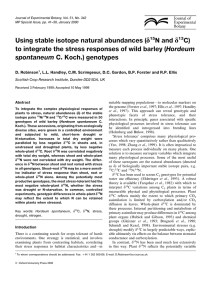Lab Guide - Sites@UCI
advertisement
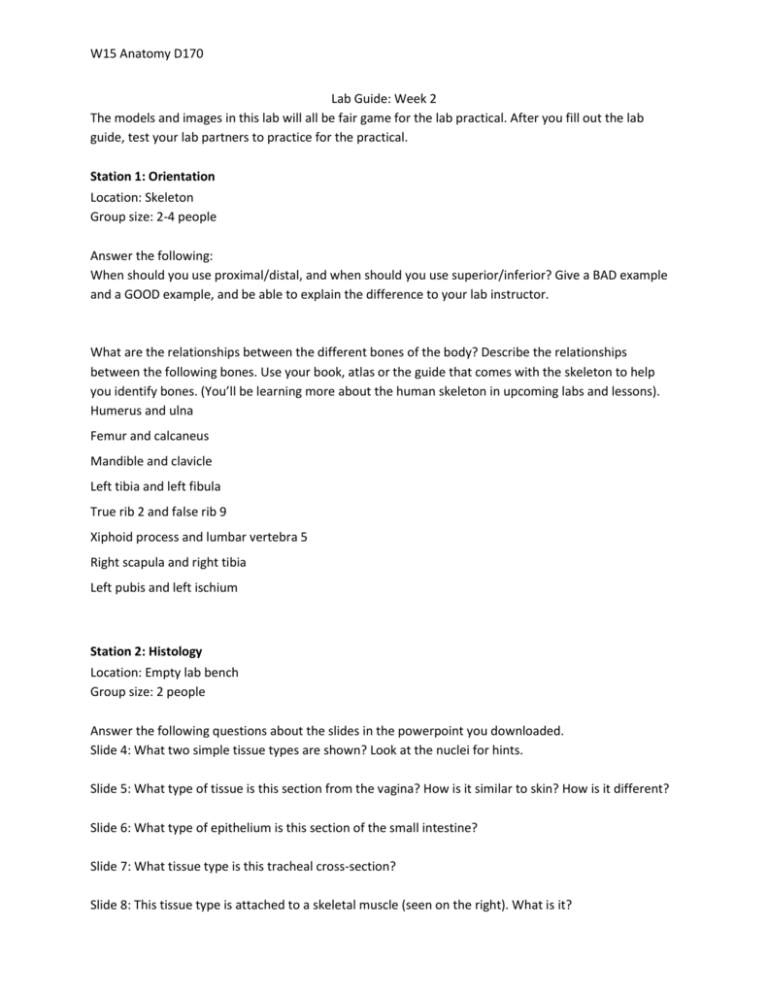
W15 Anatomy D170 Lab Guide: Week 2 The models and images in this lab will all be fair game for the lab practical. After you fill out the lab guide, test your lab partners to practice for the practical. Station 1: Orientation Location: Skeleton Group size: 2-4 people Answer the following: When should you use proximal/distal, and when should you use superior/inferior? Give a BAD example and a GOOD example, and be able to explain the difference to your lab instructor. What are the relationships between the different bones of the body? Describe the relationships between the following bones. Use your book, atlas or the guide that comes with the skeleton to help you identify bones. (You’ll be learning more about the human skeleton in upcoming labs and lessons). Humerus and ulna Femur and calcaneus Mandible and clavicle Left tibia and left fibula True rib 2 and false rib 9 Xiphoid process and lumbar vertebra 5 Right scapula and right tibia Left pubis and left ischium Station 2: Histology Location: Empty lab bench Group size: 2 people Answer the following questions about the slides in the powerpoint you downloaded. Slide 4: What two simple tissue types are shown? Look at the nuclei for hints. Slide 5: What type of tissue is this section from the vagina? How is it similar to skin? How is it different? Slide 6: What type of epithelium is this section of the small intestine? Slide 7: What tissue type is this tracheal cross-section? Slide 8: This tissue type is attached to a skeletal muscle (seen on the right). What is it? W15 Anatomy D170 Slide 9: What tissue type is this? Slide 10: This is a low-magnification view of skin. Label what you can. Slide 11: Label the layers of this thick skin Slide 12: Layer the skin structures you can see here Station 3: Regions and Cavities Location: Torso Group size: 4 people Take a stack of index cards and some tape Label the regions of the human body on the torso (axillary, sacral, mammary, etc) Be able to describe each of the major cavities found in this torso. What body cavities are each of the following organs in? What organ system does each organ belong to? If in the abdominopelvic cavity, what quadrant is found in? Answer these questions for each of the organs below. Gall bladder Stomach Pituitary gland Liver Cerebellum Heart Large intestine Spinal cord Station 4: Integument Location: Integument model Group size: 2-4 people Be able to label all structures on the model. Note that there are three types of integument shown.

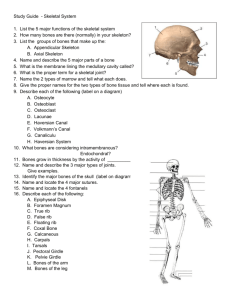
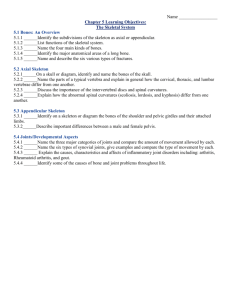
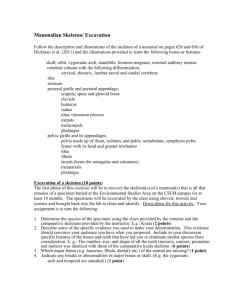
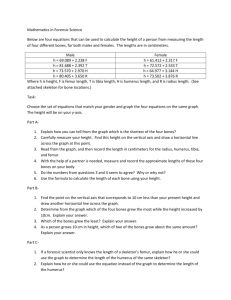

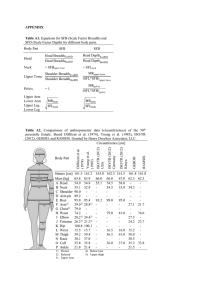
![[delta]15N - Wiley Online Library](http://s2.studylib.net/store/data/018066840_1-d41f15322f3b89b86b8d6bf4dc3a8bd1-300x300.png)
